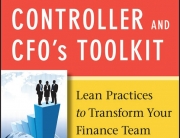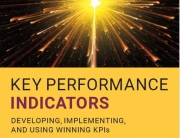| Category | Wisdom |
| About KPIs | 1. There are four types of performance measures and thus it is a myth to consider all measures are KPIs. |
| About KPIs | 2. Key performance indicators (KPIs) are those indicators that focus on the aspects of organizational performance that are the most critical for the current and future success of the organization. |
| About KPIs | 3. KPIs have seven characteristics |
| About KPIs | 5. If the CEO, members of the senior management team, and management focus on the KPIs every day, staff will naturally follow suit. |
| About measures | 6. An organization, with over 500 FTEs, will have about 10 KRIs, up to 80 RIs and PIs, and 10 KPIs. |
| About measures | 7. Lead and lag labelling of measures is misleading |
| About measures | 8. Have a mix of 60% past, 20% current and 20% future orientated measures |
| CSF | 9. The main purpose of performance measures is to ensure that staff members spend their working hours focused primarily on the organization’s critical success factors. |
| CSFs | 10. To create alignment between teams in an organization, it is important that there be only one set of between five and eight critical success factors (CSFs) for the organization. |
| CSFs | 11. To ensure that staff live and breathe them, a poster of the CSFs should be prepared and be widely seen around the work environment. |
| Designing measures | 12. In order for staff to help the KPI team to determine measures, we need to train everybody in the rules for designing measures. |
| Designing measures | 13. Designing and refining measures needs a systematic and well thought through process to ensure that the measures will promote the desired actions. |
| Designing measures | 14. The CEO needs to make it clear that no measures are to be introduced without the KPI team approval. |
| Designing measures | 15. Vet measures by holding an open session where staff members are invited to share their views on the shortlisted measures displayed on the walls of the KPI project room (known as a performance measures gallery). |
| Engagement | 16. The KPI project needs to report its wins to the SMT each week to maintain their interest in the project. |
| Engagement | 17. Staff need to be first trained in the new thinking of what are KPIs, why not all measures are KPIs, the four different types of measures, and the importance of an organization knowing their CSFs. |
| KPI project | 18. The success of a KPI project rests with trained home-grown staff who have been reassigned so that they are full time on the project. |
| KPI project | 19. For SMEs the in-house KPI team leader must have at least half the daily operational activity reassigned so that the incumbent has a chance to focus and create some momentum in the KPI project. |
| KPI project | 21. The KPI team should report directly to the CEO |
| KPI project | 22. The CEO needs to locate an external facilitator to mentor the in-house KPI team. |
| KPI project | 23. The external facilitator and the KPI project leader need to instil a “just-do-it” culture |
| KPI project | 24. Success or failure of the KPI project is determined by the presence or absence of the seven foundation stones |
| KPI project | 25. No KPI project will ever succeed without a guiding coalition of oracles behind it. |
| KPI project | 26. Delivering compelling PowerPoint Presentations is a skill that the KPI team will have to have mastered before they deliver any presentations or workshops. |
| KPI project | 27. The CEO must be the central driver, carrying around the embryonic KPIs all the time, talking about their importance frequently to all staff they meet. |
| KPI project | 28. The KPI project proposal presentation will be one of the most important presentations in the KPI TEAM leader’s working life. |
| KPI project | 29. Management will need to abandon projects, processes and reports to make time for the KPI project. |
| Maintaining interest | 30. For organizations with fewer than 500 staff, a total KPI rollout in 16 weeks is achievable. |
| Maintaining interest | 31. For SMEs with 100- 250 staff, a total KPI rollout in 10 weeks is achievable. |
| Maintaining interest | 32. For SMEs with less than 100 staff, a total KPI rollout in 6 weeks is achievable. |
| Ongoing training | 33. The KPI team will need to develop training programs so new staff can be educated in CSFs, the four types of measures and how measures are reported. |
| Reporting | 34. A KPI provided to management that is more than a few days old is useless. |
| Reporting | 35. At least half of the KPIs should be reported each day, (electronically) at 9 A.M. or constantly updated 24 hours a day, seven days a week. |
| Reporting | 36. The board should only receive a one-page governance dashboard on the five to eight KRIs. |
| Reporting | 37. There is a science behind what makes data displays work. The expert in this field is Stephen Few. |
| Reporting | 38. Spreadsheets have no place in performance measure reporting. |
| Reporting | 39. Using a monthly icon-based report for staff is a good idea because they tell staff what is good, what is adequate, and what needs to be improved without giving away confidential data. |
| Reporting | 40. Because the board’s role is clearly one of governance and not of management, it is totally inappropriate to be providing the board with KPIs. |
| Reporting | 41. Typically, a board would need to see, in there one-page dashboard, between 9 and 12 graphs covering the critical success factors and outcome statements. |
| Reporting | 42. The KPI reporting system will fail if the review process relies on structured, monthly meetings because KPIs are indicators that need monitoring, reporting, and action 24/7. |
| Roadblocks | 43. Be aware of the current perception of performance measurement within the organization. |
Source: Extracted from
Key Performance Indicators – developing, implementing and using winning KPIs (4th Edition)










